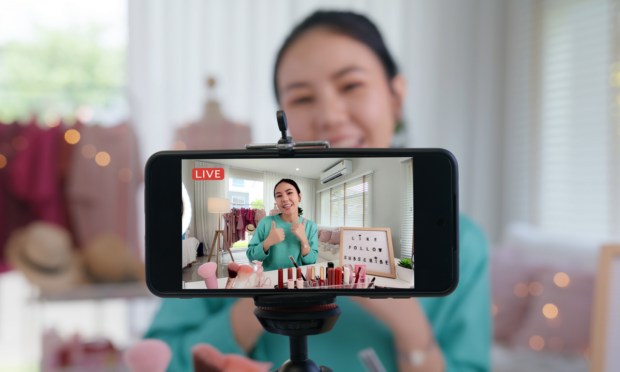
As commerce and entertainment become increasingly intertwined, high-intent consumers are still turning to brands’ and retailers’ websites to get their shoppable content.
While commerce-integrated content such as shoppable livestreams have been catching on in China, consumers in the United States still prefer a more traditional online shopping experience, Vincent Yang, co-founder and CEO of video commerce platform Firework, told PYMNTS in an interview.
“15 years ago, in the U.S., Shopify, WordPress and Squarespace were very big,” Yang said. “In China, people didn’t even have a laptop. So, that’s why China suddenly leapfrogged the website age directly to the mobile app age. In the U.S., because the website age was so big — it penetrated to every single brand — it actually makes it a lot harder to leapfrog to the next generation, which is fully mobile, fully immersive.”
U.S. shoppers are happy with their experiences with retailers and brands’ websites. The PYMNTS Intelligence report “The Online Features Driving Consumers to Shop With Brands, Retailers or Marketplaces,” which drew from a survey of more than 3,500 U.S. consumers, found that 76% of shoppers are highly satisfied when they make purchases from a retailer’s site, and 72% are similarly pleased with their experience from brands’ sites.
Firework, for its part, launched its social media uploader late last month, enabling brands to integrate their Instagram content into their own websites in a shoppable way. Yang noted that brands and retailers have seen poor adoption of shopping livestreams in the U.S. but that “shoppable video elements” are “actually starting to gain traction” — the more static kind that can be viewed at any time.
“The reusability of livestreams is not very good, whereas with the shoppable videos, there’s no time duration for it,” he explained.
Relatively few consumers are making purchases via social media. The 2023 PYMNTS Intelligence report “Tracking the Digital Payments Takeover: Monetizing Social Media,” which drew on insights from a study of nearly 3,000 U.S. consumers, found that while 43% of consumers browse social media to find goods and services, only 14% ultimately purchase those goods and services via social media.
“Social videos inside TikTok are definitely helpful to create a brand awareness, but they don’t necessarily drive sales,” Yang said. “The thing that drives sales and purchasing intent is more about the video happening on a brand’s website.”
He added that consumers trust brands’ sites more. As shoppable content catches on, Yang said he sees beauty purchases leading the pack, with consumers wanting to see the products in action, since the packaging itself does not tell them much about how the product works.
This market is growing. The PYMNTS Intelligence study “Tracking the Digital Payments Takeover: Catching the Coming eCommerce Wave” found that 39% of consumers are highly likely to increase their online purchases of health and beauty products in the next year — a greater share than said the same of any other kind of purchase.
Yang added that following beauty, shoppable videos are catching on in fashion, with consumer electronics following behind.
“One year from now, … shoppable videos should be a must-have for every single website,” Yang said. “From our own data, we should see shoppable video consumers on websites hit about 300 million by the end of next year, which means it should cover quite a lot of people. Video commerce should not be a new thing now.”
For all PYMNTS retail coverage, subscribe to the daily Retail Newsletter.